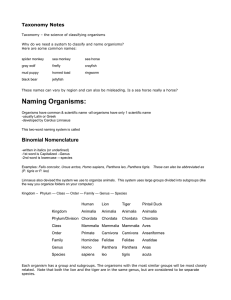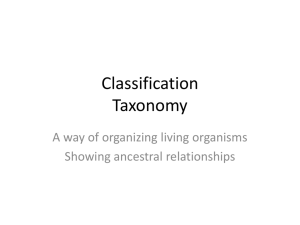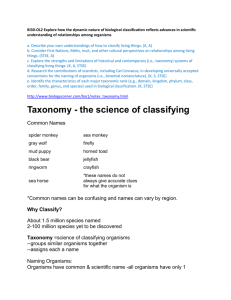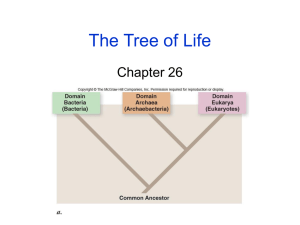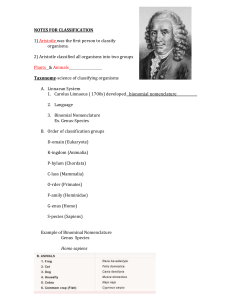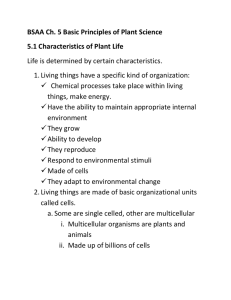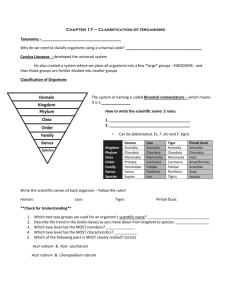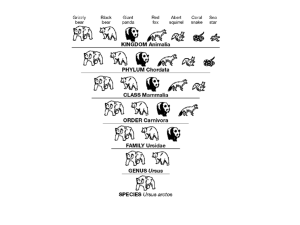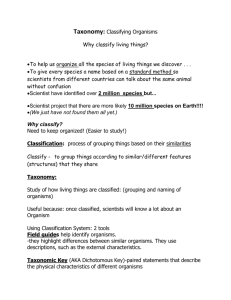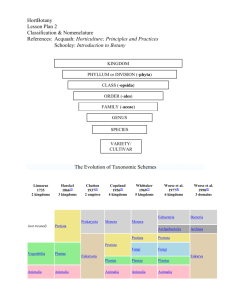The Theory of Evolution
advertisement
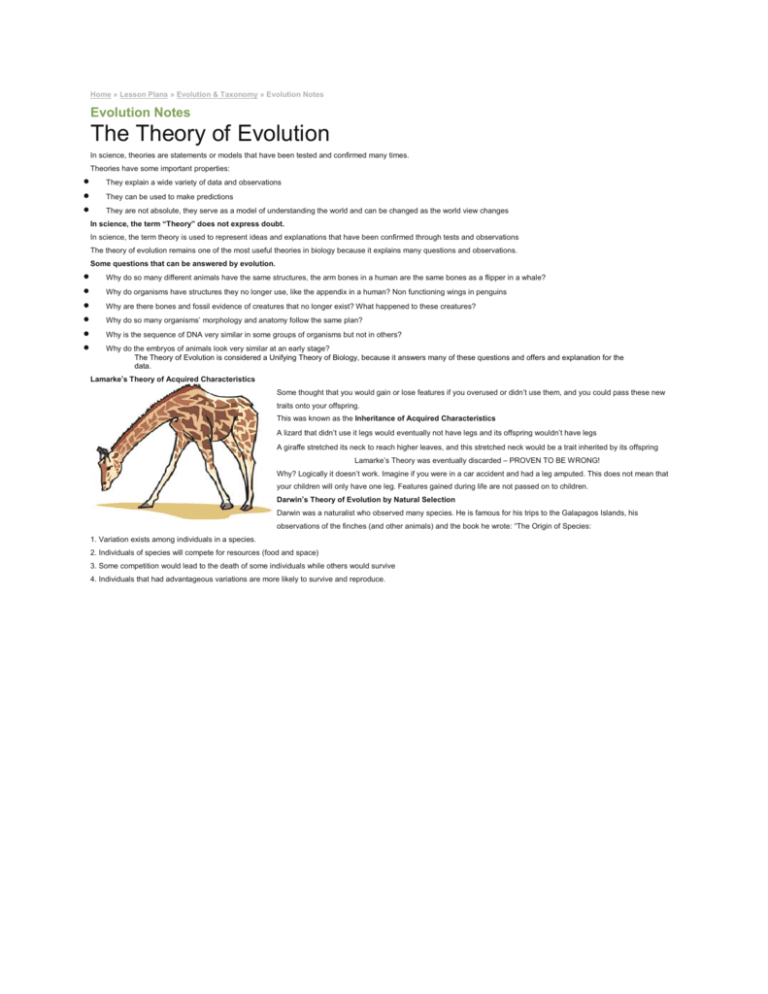
Home » Lesson Plans » Evolution & Taxonomy » Evolution Notes Evolution Notes The Theory of Evolution In science, theories are statements or models that have been tested and confirmed many times. Theories have some important properties: They explain a wide variety of data and observations They can be used to make predictions They are not absolute, they serve as a model of understanding the world and can be changed as the world view changes In science, the term “Theory” does not express doubt. In science, the term theory is used to represent ideas and explanations that have been confirmed through tests and observations The theory of evolution remains one of the most useful theories in biology because it explains many questions and observations. Some questions that can be answered by evolution. Why do so many different animals have the same structures, the arm bones in a human are the same bones as a flipper in a whale? Why do organisms have structures they no longer use, like the appendix in a human? Non functioning wings in penguins Why are there bones and fossil evidence of creatures that no longer exist? What happened to these creatures? Why do so many organisms’ morphology and anatomy follow the same plan? Why is the sequence of DNA very similar in some groups of organisms but not in others? Why do the embryos of animals look very similar at an early stage? The Theory of Evolution is considered a Unifying Theory of Biology, because it answers many of these questions and offers and explanation for the data. Lamarke’s Theory of Acquired Characteristics Some thought that you would gain or lose features if you overused or didn’t use them, and you could pass these new traits onto your offspring. This was known as the Inheritance of Acquired Characteristics A lizard that didn’t use it legs would eventually not have legs and its offspring wouldn’t have legs A giraffe stretched its neck to reach higher leaves, and this stretched neck would be a trait inherited by its offspring Lamarke’s Theory was eventually discarded – PROVEN TO BE WRONG! Why? Logically it doesn’t work. Imagine if you were in a car accident and had a leg amputed. This does not mean that your children will only have one leg. Features gained during life are not passed on to children. Darwin’s Theory of Evolution by Natural Selection Darwin was a naturalist who observed many species. He is famous for his trips to the Galapagos Islands, his observations of the finches (and other animals) and the book he wrote: “The Origin of Species: 1. Variation exists among individuals in a species. 2. Individuals of species will compete for resources (food and space) 3. Some competition would lead to the death of some individuals while others would survive 4. Individuals that had advantageous variations are more likely to survive and reproduce. Taxonomy Taxonomy – the science of classifying organisms Why do we need a system to classify and name organisms? Here are some common names: spider monkey sea monkey sea horse gray wolf firefly crayfish mud puppy horned toad ringworm black bear jellyfish spiny anteater These names can vary by region and can also be misleading. Is a sea horse really a horse? Naming Organisms: Organisms have common & scientific name -all organisms have only 1 scientific name -usually Latin or Greek -developed by Carolus Linnaeus This two-word naming system is called….. Binomial Nomenclature -written in italics (or underlined) -1st word is Capitalized –Genus -2nd word is lowercase —species Examples: Felis concolor, Ursus arctos, Homo sapiens, Panthera leo , Panthera tigris. These can also be abbreviated as (P. tigris or P. leo) Linneaus also devised the system we use to organize animals. This system uses large groups divided into subgroups (like the way you organize folders on your computer) Kingdom — Phylum — Class — Order — Family — Genus — Species Human Lion Animalia Animalia Animalia Animalia Phylum/DivisionChordata Chordata Chordata Chordata Kingdom Tiger Pintail Duck Class Mammalia MammaliaMammalia Aves Order Primate Family Homindae Felidae Genus Homo Panthera Panthera Anas Species sapiens leo acuta Carnivora Carnivora Felidae tigris Anseriformes Anatidae Each organism has a group and subgroups. The organisms with the most similar groups will be most closely related. Note that both the lion and the tiger are in the same genus, but are considered to be separate species. There are currently 6 kingdoms – organisms are placed into the kingdoms based on the number and type of cells they have, and their nutritional needs. number of Cells energy cell type examples archaebacteria unicellular some autotrophic, most chemotrophic prokaryote “extremophiles” eubacteria unicellular autotrophic and heterotrophic fungae most multicellular heterotrophic bacteria, prokaryote E. coli mushrooms, eukaryote yeast plantae multicellular autotrophic trees, eukaryote grass animalia multicellular heterotrophic humans, eukaryote insects, worms protista most unicellular ameba, eukaryote paramecium, algae heterotrophic or autotrophic
